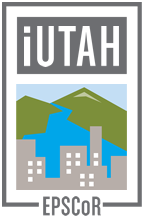Research Catalyst Grantee

Weihong Wang
Utah Valley University
Project Title
Investigating temporal and spatial variations of nutrient and trace metal loading to Utah Lake
Abstract
Utah Lake, the largest freshwater lake in the United States west of the Mississippi River, has received heavy loading of various contaminants, such as high concentrations of phosphorus (P) and nitrogen (N) wastes from raw sewage, effluent from sewage treatment plants, runoff from surrounding agricultural and farming land, and metals from mining and industrial activities since European settlement. However, the rate of loading of N, P, and trace metals to Utah Lake varies both in space and time. Therefore, a good understanding of such spatial and temporal variability is critical for developing integrated approaches to managing lake water quality. In this project, we will take water and floc layer sediment samples from the American Fork River, Provo River, Hobble Creek, Spanish Fork River, Jordan River and Utah Lake to investigate the temporal and spatial variations in nutrient (P, N) load and trace metal (mercury/methylmercury, arsenic, lead, cadmium, etc.) concentrations. In addition, water samples will be analyzed for H and O stable isotopes to establish a water budget for Utah Lake, and floc layer sediment samples will be analyzed for C and N stable isotopes to differentiate organic matter sources to Utah Lake. Upon completion of this project, we will be able to quantify spatial and temporal variations in nutrient and metal loading to Utah Lake and to examine how this variability affects water quality. Furthermore, we will be able to trace the origins of organic matter sources to the lake and establish nutrient, metal, and water budget for Utah Lake. The knowledge from this project can guide actions that are increasingly required to safeguard the services provided by Utah Lake ecosystem in a future with increasing pressure on freshwater resources. The water, nutrient, and trace metal budgets developed in this project will provide important information for determining which inflows are contributing the largest contaminant loads to Utah Lake. Consequently, the data derived from this project can help state agencies to address significant questions in water quality, hydrologic, environmental, and biogeochemical sciences and management related to human-environment interactions.
Collaborators
Eddy Cadet, Utah Valley University
Suzanne Walther, Utah Valley University
Alessandro Zanazzi, Utah Valley University
Greg Carling, Brigham Young University


